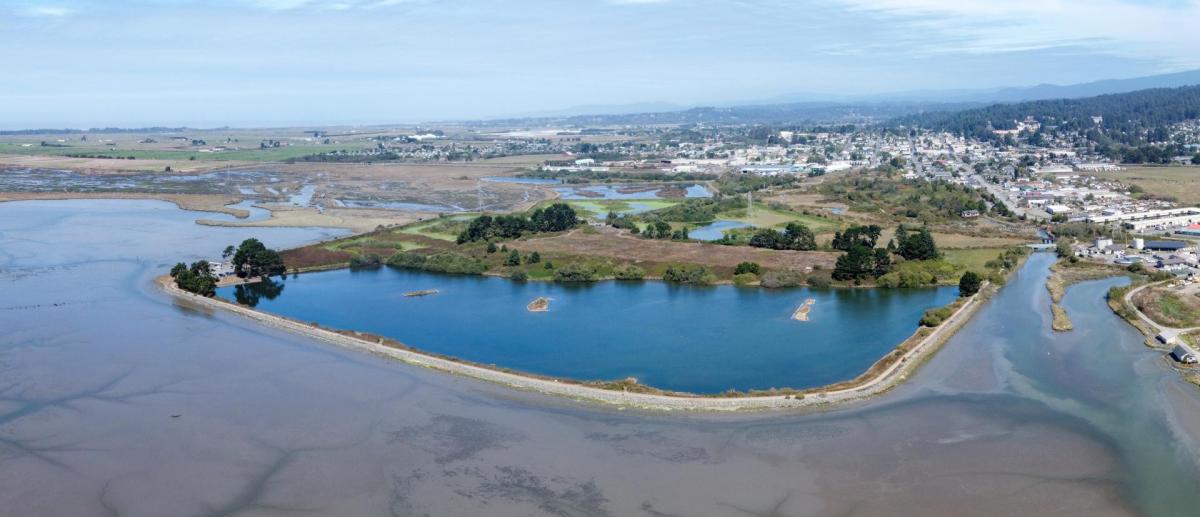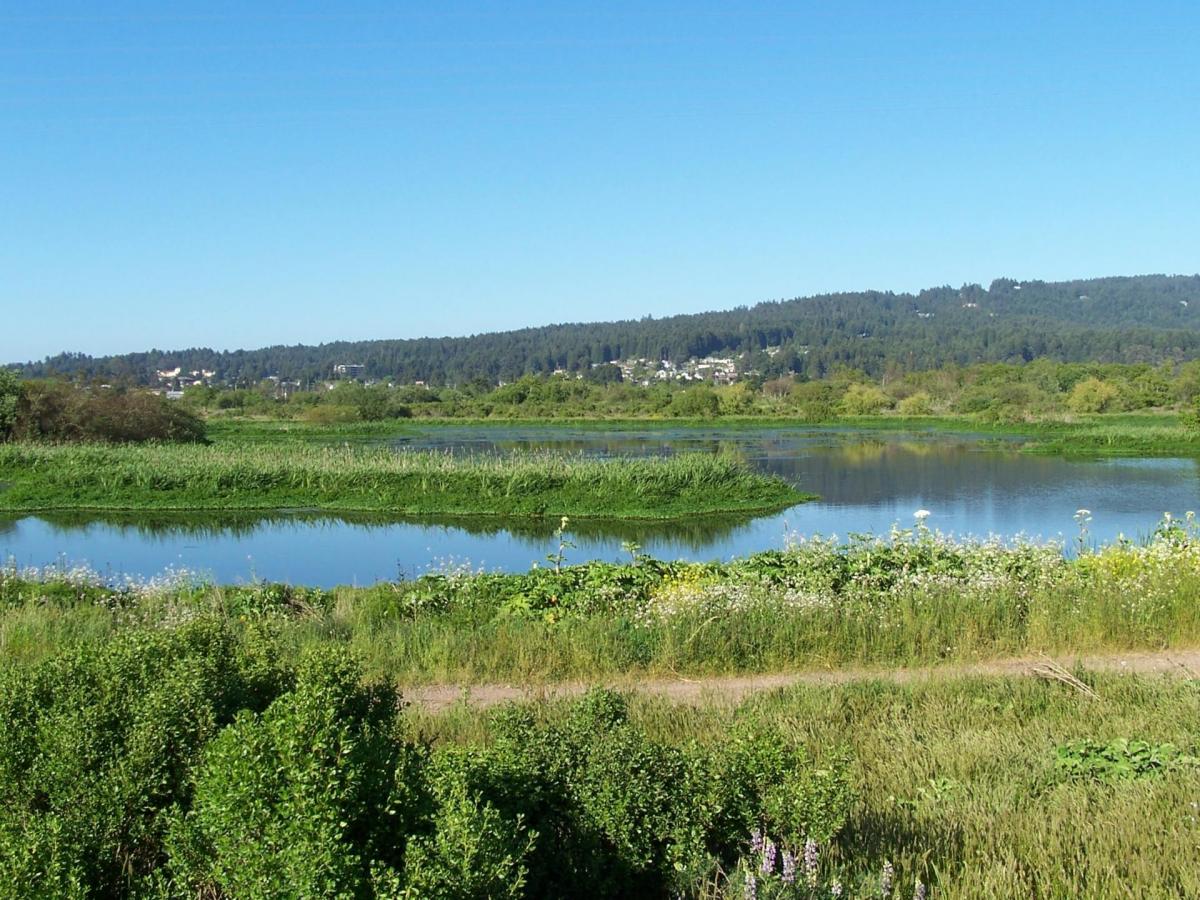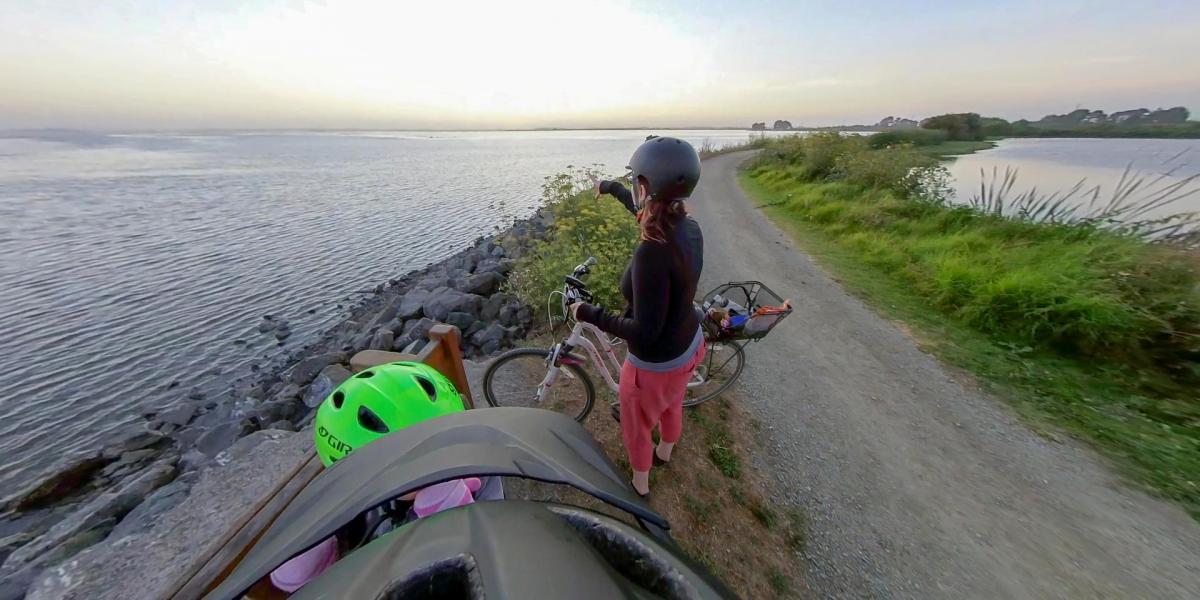Arcata rises to the challenge: innovative upgrades to award-winning wastewater treatment plant
Jill Oviatt is the director of communications and marketing at the League of California Cities and Editor in Chief of Western City; she can be reached at joviatt@cacities.org.
When the water is slowly rising around you, there is no time to float on your laurels.
“The city of Arcata’s wastewater treatment system sits on a bay,” explains Arcata City Manager Karen Diemer. “The bay is rising, and we need both a reinforcement and a retreat strategy that ensures the system works effectively and efficiently through the next 100 years of sea level rise.”
Just 34 years ago, Arcata’s pioneering wetland wastewater treatment facility was the talk of the town, winning multiple awards for its integration of oxidation ponds and fresh water marshes to do the dirty work of cleaning the city’s wastewater through a mostly natural process involving bacteria, plants, and sunlight.
A quick overview of how the process works
Sewage flows into the collection area, where wastewater is separated from sludge. The sludge is kept in tanks, where it is digested prior to being drained into drying trays. The dried sludge is broken up and mixed with plants and wood chips in a compost pile. High temperatures in the pile kill off harmful bacteria. Within a month, compost is ready to spread across the town’s flower beds and sports fields.
The water, separated from the solids, sits in an oxidation pond, where sunlight kills most microbes. It is chlorinated, then pumped into a series of marsh ponds. There, it mixes with water from the bay. After a couple of weeks, the water is re-chlorinated, dechlorinated, and pumped into the bay.
In addition to cleaning the water, the treatment marshes were also transformed into the Arcata Marsh and Wildlife Sanctuary, covering more than 300 acres and providing bike paths, hiking trails, and refuge for 300 species of birds.
“We flush with pride!” Diemer chuckled. “The City of Arcata’s treatment system is a great reuse of wastewater, providing residents and visitors a place to appreciate nature and open space in an urban setting, attracting several hundred users every day, participating in a wide variety of activities like walking, cycling, bird watching, dog walking, and picnicking.”
The wastewater treatment system takes on new challenges
While the city’s pioneering system has been replicated worldwide, most systems still rely solely on mechanical and chemical treatment. What sets Arcata’s system apart is the additional wildlife, environmental, and recreational benefits.
But the once groundbreaking equipment is breaking down, and the city has developed a two-phase project to not only replace 50-year-old parts but develop new strategies to face new challenges.
Diemer says she is amazed how long the original parts used in the wastewater plant lasted — way past their estimated lifespan — and she credits the excellent maintenance by city staff. But she says her team has worked hard over the last couple of years to craft a visionary plan that not only replaces equipment but innovates for the future once again.
Phase 1 of the $64 million improvement project focuses on replacing parts, upgrading the treatment pond, and transitioning from chlorine disinfection to ultraviolet disinfection, which means removing the last part of the process which involves chemical treatment of the water.
Phase 2 includes additional marsh and pond rehabilitation and the installation of an oxidation ditch, yet another pioneering process that uses the concept of the wetland system but in a highly enriched environment to speed up water treatment.
It is the Phase 2 work that addresses the worrisome impact of climate change and the resulting rising of the bay.
“We are following the science and basing our planning on the measurement of the bay’s hightide over time,” said Diemer. “The bay will eventually reclaim our marsh treatment ponds, and so we are currently building one and planning for two oxidation ditches that will clean the water faster and more efficiently, so the outlying marshes could be phased out if and when they are no longer available.”
The wastewater treatment improvement project started in 2020 and is scheduled to be completed in 2025. Diemer says is the most expensive infrastructure project the city has ever undertaken and is being funded through a mix of grants and loans. “The second most expensive project was when we built the first one.”
The surprising benefits of merging wastewater treatment with public spaces
Diemer says what the pandemic made crystal clear to both city officials and Arcata residents was that investments in public and open spaces are invaluable when the world shuts down.
“The Arcata wastewater treatment and wildlife sanctuary averages over 300 people a day and that doubled during the pandemic. It is a place people turned to where they could safely exercise and gain peace of mind throughout the pandemic.”
With cities also looking for answers to the housing crisis and how to increase the number of homes on available land, finding a way to integrate necessary infrastructure, open spaces, and housing is key.
“While you wouldn’t initially think combining recreational spaces and wastewater treatment was a natural fit, people are eating picnic lunches, enjoying the view of the bay and the marshes, and spotting the wildlife without ever realizing that they are smack in the middle of a wastewater treatment facility,” Diemer mused. “Even, if you don’t see the value right away, these spaces are the spaces people want to live in and thrive.”




